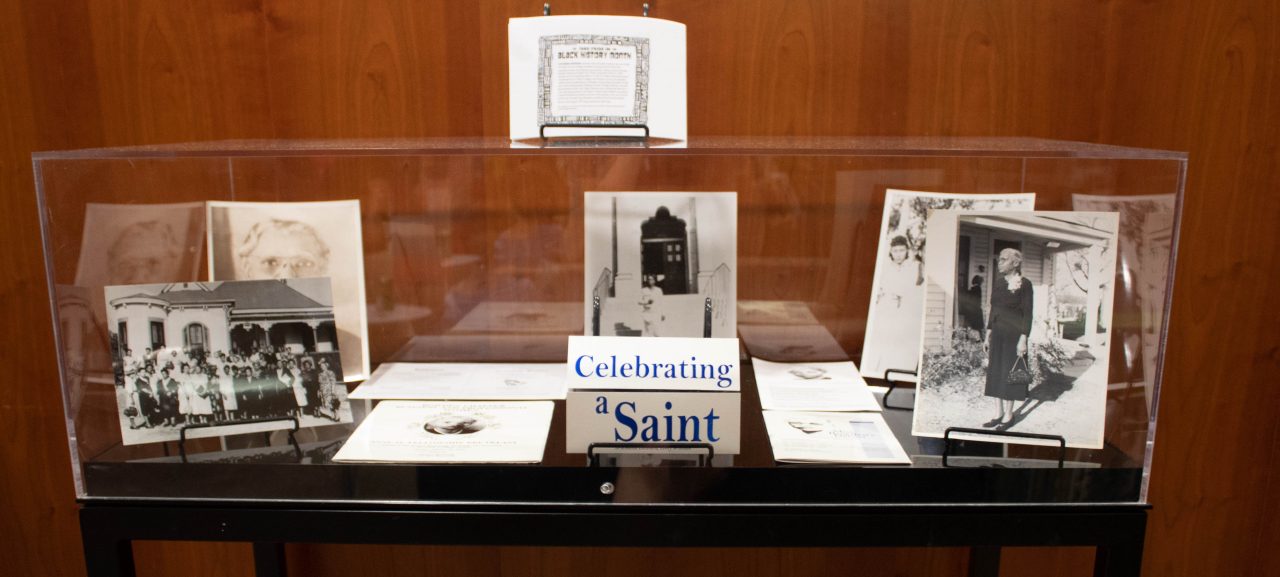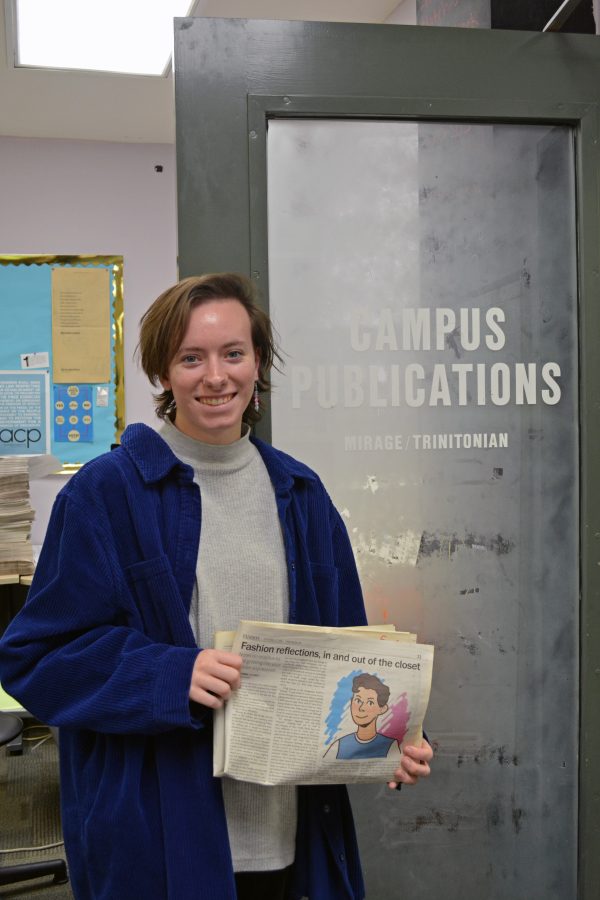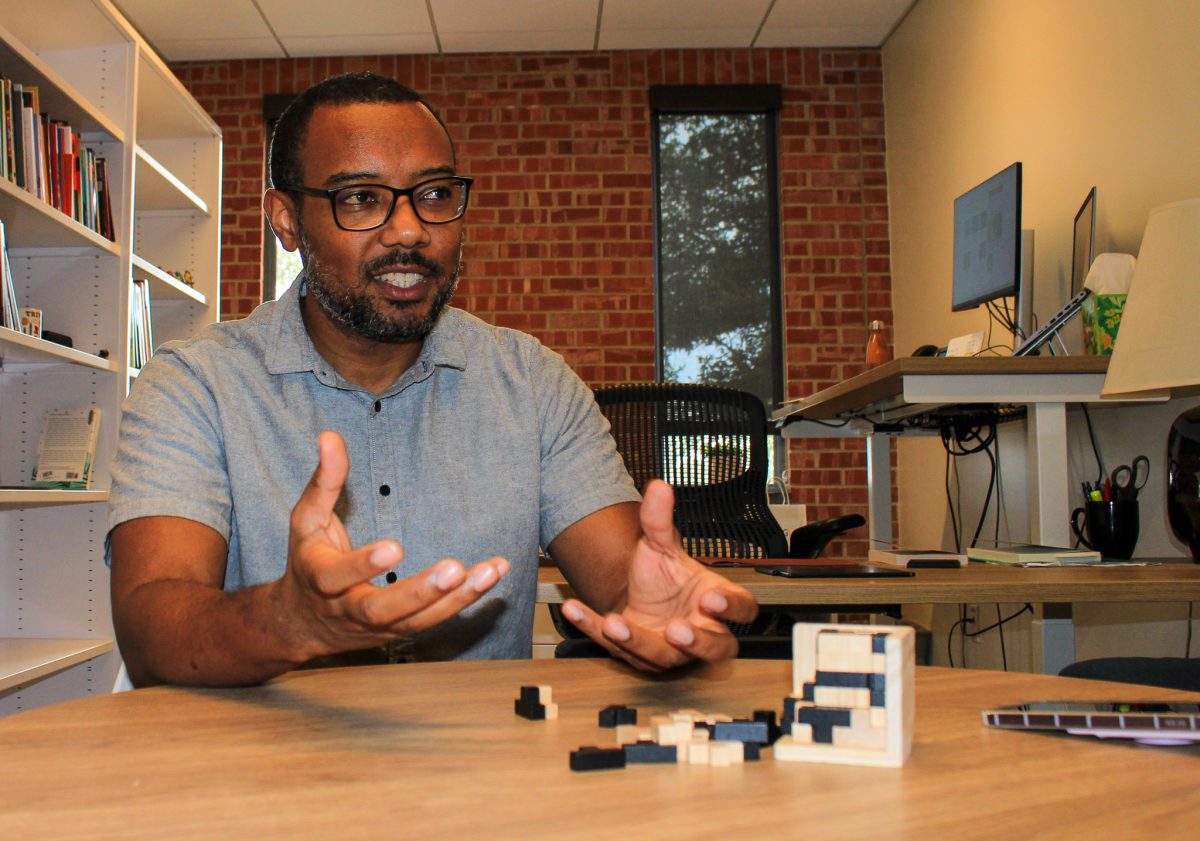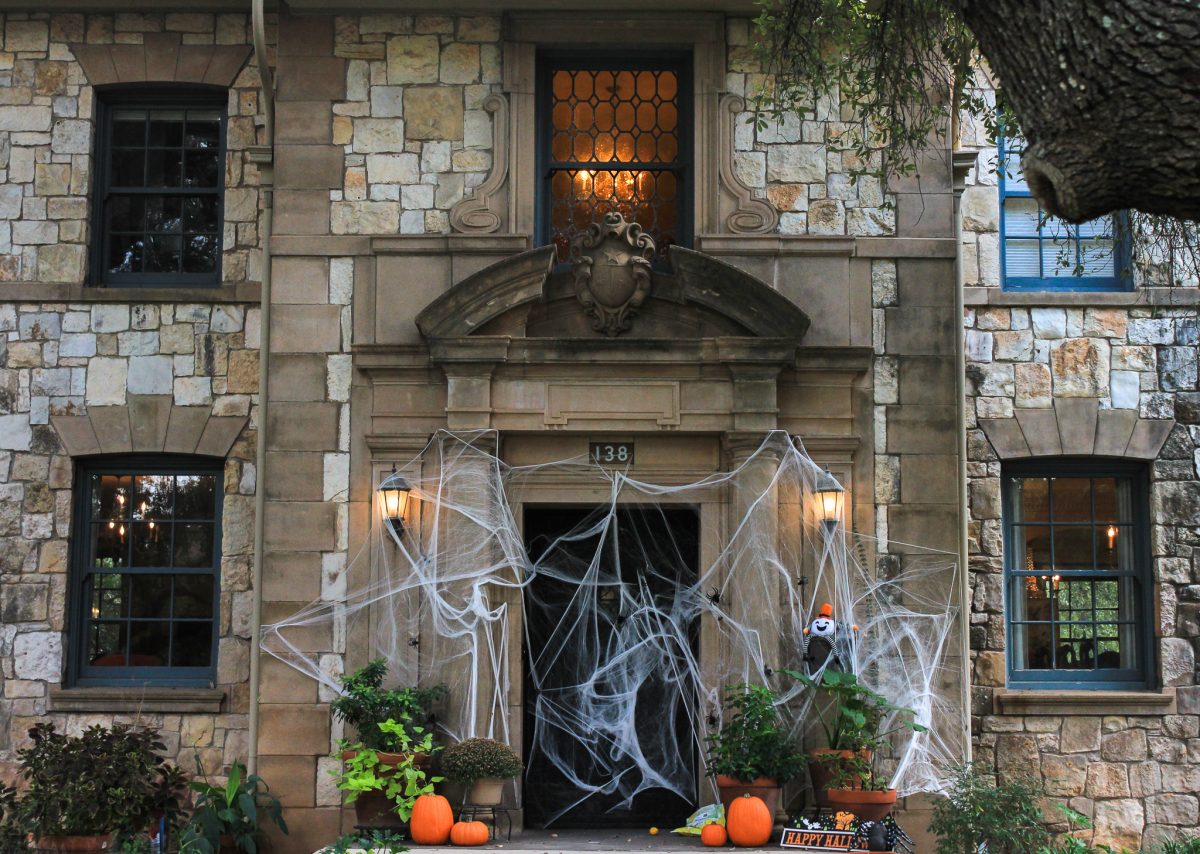Photo by Matthew Claybrook
In honor of Black History Month, the Coates Library is currently displaying an exhibit about the life of Artemisia Bowden, one of San Antonio’s first black female college presidents. Bowden founded St. Philip’s College (part of Alamo Colleges District) and served as president, dean and dean emeritus from 1902 to 1954.
Located on the library’s third floor near Starbucks, this exhibit contains letters from other black educators such as Mary McLeod Bethune, historical photographs of Bowden and her students, the script for a short play about Bowden’s life titled “Miss Bowden’s Dream” by Sterling Hurston and performed by the St. Philip’s College’s Department of Fine Arts to celebrate the college’s 100th anniversary in 1998, as well as commemorative buttons with images of Bowden that students can take to remember the exhibit.
Jes Neal, archivist at Coates Library, collaborated with Rebecca Barnard, the archivist at St. Philip’s College, to create an exhibit about Bowden’s life.
“I thought that [reaching out to Barnard] would be a great way to collaborate with a historically black college in the city as well as a way to spotlight San Antonio’s black history,” Neal said.
Barnard provided the materials for the exhibit from the St. Philip’s library, and Neal curated and arranged them for display. Neal estimates that the overall process took approximately two months.
According to Barnard, Bowden’s presence was essential in shaping St. Philip’s for half a century, turning it from an Episcopal school for black girls into an established institution of higher education.
“[Bowden] kept the school going when it was not financially viable for many years. They were close to closing the school so many times, and she did everything from putting forward her own money to help the school to even purchasing the property that we’re currently located on,” Barnard said. “We originally started under the Episcopal Church, but they could no longer fund us, so we joined with San Antonio College in that district, which later became the Alamo Colleges District. [Bowden] spearheaded that effort to get the school to become a public school. … She’s the reason we’re here today.”
Although St. Philip’s College separated from its roots as an Episcopal school and became a junior college in 1928, Bowden was posthumously elevated to sainthood by the Episcopalian Church in 2015 with Aug. 18 as her saint day and a leaflet in the library collection shows her inclusion into the Episcopalian Church’s “Holy Women, Holy Men: Celebrating the Saints” calendar.
In addition to her role as an educator, Bowden was also influential in the San Antonio community: she founded the city’s Negro Business and Professional Women’s Club, founded the Bowden Chapter of Business and Professional Women, as well as served as president of the San Antonio Metropolitan Council of Negro Women.
Barnard said that while not many documents from Bowden’s life survived through the years, the ones that did — including a brochure for the Bowden Chapter’s 1996 Annual Fellowship Breakfast — reflect Bowden’s active engagement in the city.
“She was involved in a lot of health initiatives like the Tuberculosis Society, everything from championing civil rights to education, [which was] her primary focus. She viewed the school as her child: it was what she lived for,” Barnard said.
Elizabeth Poff, Trinity’s digital technologies librarian, used to work at St. Phillip’s College as a multimedia specialist, web developer and math teacher; she also participated in St. Philip’s centennial celebration.
Poff said that Bowden’s influence can still be felt at St. Philip’s College today.
“[Bowden] was very much a central part of [the centennial] celebration,” Poff said. “There’s pictures and paintings of her in different places, and I think most likely if you mentioned Artemisia Bowden to anybody on campus, they [would] know who she is — one of the buildings is named after her, the Bowden building. So she’s still a prominent figure, at least in my mind.”
Barnard hopes that students who view the exhibit come away with an appreciation for the diversity of African American history.
“I hope [students] learn more about figures during Black History Month that they may never have heard of before. Every Black History Month you hear the names Frederick Douglass and Shirley Chisholm and so on, but [Bowden] is just as worthy of recognition,” Barnard said. “People can really learn from her life and how she lived her life and how much this community owes to her.”
Neal also hopes that students will visit the exhibit and learn more about Bowden’s life and accomplishments.
“Black women’s accomplishments are often overlooked in historical exhibits about black history, and that’s part of the reason that I chose to feature Artemisia Bowden for this exhibit,” Neal said. “This is my first archive showcase, and I look forward to finding out what students think of it.”
Students who want to learn more about the library’s Special Collections and Archives (which can be found in the second floor of the library in room 208) can email [email protected] or [email protected].













